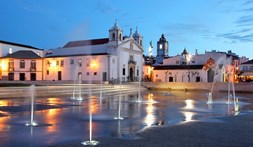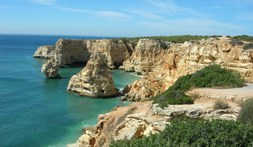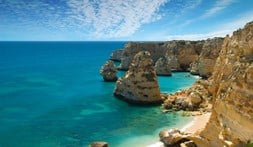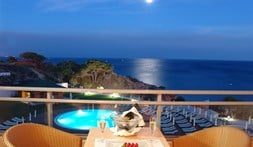Information
Algarve

The Algarve is divided into three large tracks, all of them of great landscape beauty:
- The coast, where most of the regional economic activity is concentrated. The Algarve coast is very diverse, ranging from abrupt coasts, extensive sands, jagged lagoons, marshes, and other dune formations. The predominant rocks are essentially sedimentary (as is the case of sandstone and conglomerates). Morphologically, the coast has a low altitude and is mostly composed of flattened reliefs, arranged by meadows and floodplains;
- Barrocal is a transition zone between the coast and the mountains, consisting of limestone and shale rocks. Also known as the mountain edge, this area is traditionally the main supplier of agricultural products in the Algarve, where its famous medronho, honey, and cork stands out;
- The mountain range occupies 50% of the territory. It is formed by shale rocks and some granite. The main mountain complexes are the Espinhaço de Cão mountain range, the Monchique mountain range, the highest point in the Algarve: 902 meters, and the Caldeirão or Mú mountain range.
The geographical position of the Algarve gives it special bioclimatic characteristics. The climate is temperate, of Mediterranean characteristics, with more than 3000 hours of sunshine per year and a weak average annual rainfall.
The Algarve enjoys the best weather conditions in Europe all year round. Characterized by scarce periods of precipitation, usually concentrated in the months of November to March, and by a high level of insolation, the Algarve region presents excellent weather conditions for the development of tourist activity throughout the year.
During the summer the temperatures are high, which provides the tourism of "Sun and Sea" and elevates the Algarve as an authentic paradise for bathers. This is a region poring over fine white sand, which stretches for miles of coastline and equipped with a calm sea, with tepid temperatures that are around 22 degrees Centigrade in the summer period.
Due to its importance and geographical location, the Algarve receives many climatic influences: from the European continent to North Africa, from the Atlantic Ocean to the Mediterranean. Maximum temperatures fluctuate between 15 and 31 degrees Centigrade throughout the year, with no negative lows in winter, a season in which sunny days induce the visit of tourists from northern European countries.




